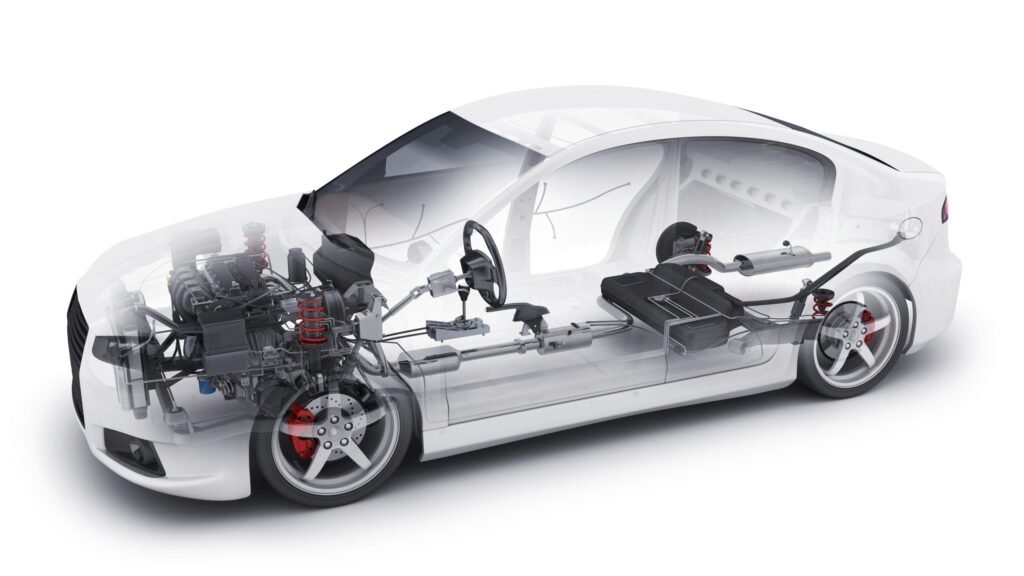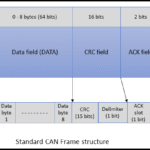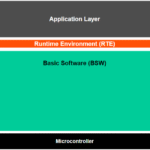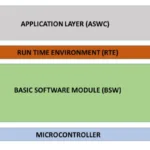What is a Microcontroller?
When you press a button on your microwave, turn on your car’s headlight, or open your washing machine — a tiny, unseen computer quietly gets the job done. That hidden computer is called a Microcontroller.
In this article, we’ll cover:
-
What is a Microcontroller (MCU)?
-
Key Components of a Microcontroller
-
Difference Between Microcontroller and Microprocessor
-
Popular MCU Families
-
How Microcontrollers are Used in Real Life
-
Why Should You Learn About MCUs?
1️⃣ What is a Microcontroller?

A Microcontroller (MCU) is a small computer on a single chip. It contains:
- Processor (CPU) – executes the program
- Memory (RAM, Flash) – stores data and code
- Peripherals (Timers, ADCs, UART, SPI, etc.) – interfaces with the external world
MCUs are designed to control specific tasks, such as turning on a motor, reading sensor data, or communicating with other devices. Think of it like the “brain” of small machines. Microcontrollers (MCUs) come in several types, categorized by different criteria such as architecture, bit width, performance, and application domain. Here’s a breakdown of the main types of MCUs:
1. Based on Bit Width
This defines how much data the MCU can process at once.
| Type | Description | Examples |
|---|---|---|
| 8-bit MCU | Basic, low power, used in simple applications | ATmega328 (Arduino), PIC16, 8051 |
| 16-bit MCU | More performance and precision, used in motor control, sensing | MSP430, PIC24 |
| 32-bit MCU | High performance, used in automotive, industrial, and IoT | STM32, NXP Kinetis, ESP32, Renesas RX |
2. Based on Core Architecture
Defines the CPU core inside the MCU.
| Architecture | Description | Examples |
|---|---|---|
| ARM Cortex-M | Most popular 32-bit core, low power & powerful | STM32, NXP LPC, TI Tiva |
| 8051 | Classic 8-bit MCU, still used in simple systems | Atmel 89C51, Silicon Labs |
| AVR | Known for Arduino boards | ATmega328, ATtiny85 |
| PIC | Microchip’s own architecture (8/16/32-bit) | PIC16F877A, PIC32 |
| RISC-V | Open-source ISA gaining popularity | GD32V, SiFive E310 |
| RX, RL78 (Renesas) | High-performance embedded MCUs for automotive and industrial |
3. Based on Application
Some MCUs are designed for specific fields:
| Type | Target Use | Example |
|---|---|---|
| General-purpose MCU | Home appliances, consumer electronics | STM32F1, PIC16 |
| Automotive MCU | With safety & reliability features (ASIL, CAN, AUTOSAR support) | Infineon AURIX, NXP S32K, Renesas RH850 |
| Wireless MCU | With built-in Wi-Fi, BLE, or Zigbee | ESP32, CC2640, nRF52 |
| Ultra-low Power MCU | For battery-powered devices | TI MSP430, STM32L series |
| Secure MCU | For secure boot, encryption, payments | NXP i.MX Secure, Microchip CryptoAuth |
4. Based on Memory Type
Defines how the program is stored.
| Type | Description |
|---|---|
| Flash-based MCU | Most modern MCUs use Flash memory to store code |
| ROM/OTP-based MCU | Used in low-cost, mass production |
| EEPROM-equipped MCU | Useful when non-volatile data needs frequent updates |
Summary Table
| Criteria | Types |
|---|---|
| Bit Width | 8-bit, 16-bit, 32-bit |
| Core | ARM Cortex-M, 8051, AVR, PIC, RISC-V |
| Application | Automotive, General-Purpose, Wireless, Low Power, Secure |
| Memory | Flash, EEPROM, ROM/OTP |
2️⃣ Key Components of a Microcontroller
Here’s what’s inside most microcontrollers:
| Component | Function |
|---|---|
| CPU (Core) | Executes instructions |
| Flash Memory | Stores program code |
| RAM | Temporary storage for variables |
| Timers/Counters | Measure time, generate PWM |
| ADC (Analog-to-Digital Converter) | Reads analog signals (like temperature sensors) |
| GPIO (General Purpose Input/Output) | Reads buttons, controls LEDs, etc. |
| Communication Interfaces | UART, SPI, I2C, CAN, USB, etc. |
3️⃣ Microcontroller vs Microprocessor
| Feature | Microcontroller | Microprocessor |
|---|---|---|
| Purpose | Task-specific (e.g., control a fan) | General-purpose computing (e.g., PC) |
| Components | CPU + memory + peripherals in 1 chip | CPU only, needs external memory and peripherals |
| Power Usage | Low | High |
| Cost | Cheap | More expensive |
| Example | STM32, PIC, ATmega | Intel i7, ARM Cortex-A |
4️⃣ Popular Microcontroller Families
Several vendors make MCUs with various performance levels and features:
🔹 STM32 (STMicroelectronics) – Widely used in automotive and industrial systems
🔹 PIC (Microchip) – Known for ease of use in smaller applications
🔹 AVR (Microchip) – Used in Arduino boards
🔹 NXP LPC series – Real-time control applications
🔹 Renesas RX, RL78 – Automotive and consumer devices
🔹 Texas Instruments (MSP430, TMS320) – Ultra-low power and signal processing
Each family has its own ecosystem of tools and development boards.
5️⃣ Real-Life Applications of Microcontrollers
Microcontrollers are everywhere:
| Application | Example |
|---|---|
| Home Appliances | Washing machines, microwave ovens |
| Automotive | Engine control, airbags, ABS, infotainment |
| Consumer Electronics | Remote controls, cameras, toys |
| Industrial Automation | Motor control, robotics, PLCs |
| Medical Devices | Blood pressure monitors, insulin pumps |
| IoT Devices | Smart thermostats, weather stations |
6️⃣ Why Should You Learn About MCUs?
If you’re interested in embedded systems, robotics, or automotive software — MCUs are your entry point. Learning to program microcontrollers teaches you:
- How to interact with hardware
- How real-time systems work
- How to write efficient, low-level code
- How to use embedded development tools and debuggers
Once you understand how an MCU works, you’ll be able to move toward AUTOSAR, RTOS, or even designing your own custom boards.
(This post is written with the support of AI)





Leave a Reply